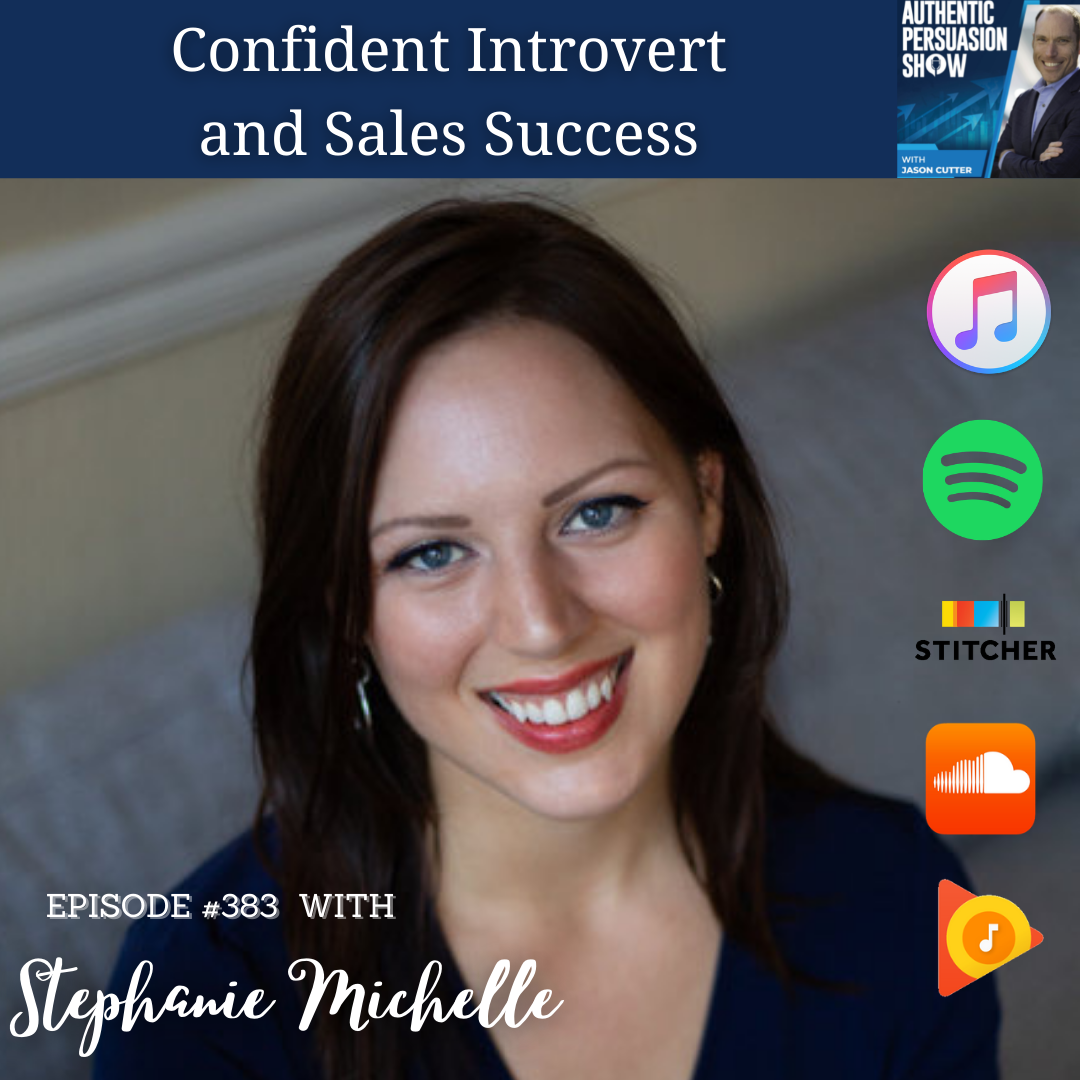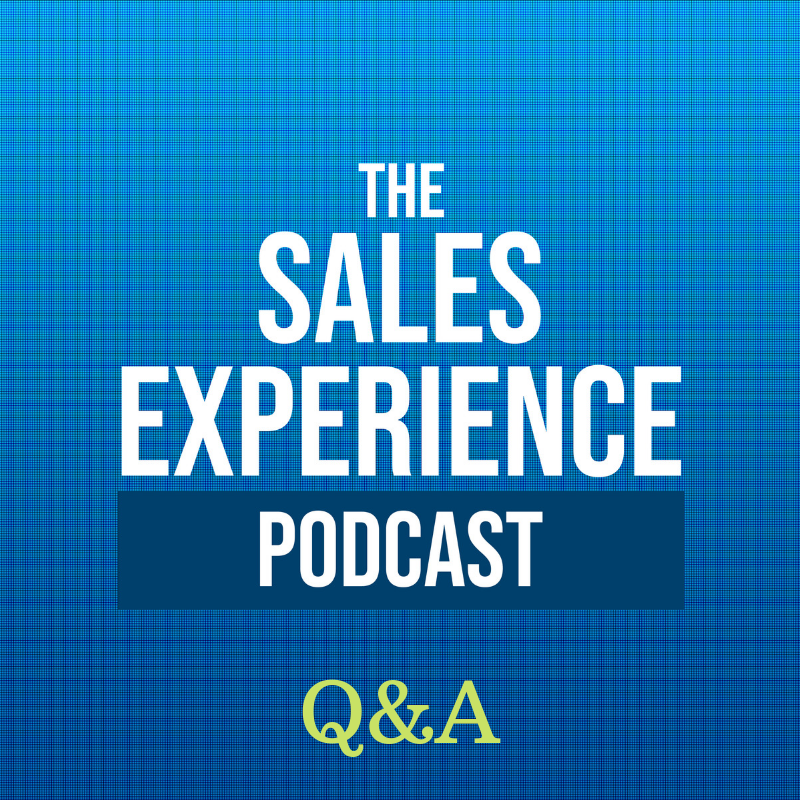Episode Transcript
[00:00:00] Speaker A: Welcome to the authentic Persuasion show. On this episode I want to replay part of a previous show. Maybe you heard the original full length episode and this could be a great refresher and reminder. Or maybe this is your first time hearing this content and the timing could be just right to help you leverage authentic persuasion today in your role, no matter what. Here's to your success.
This is the authentic persuasion.
[00:00:23] Speaker B: Show.
[00:00:25] Speaker C: It.
[00:00:26] Speaker B: Before we get into the hope step, which is going to be next week, I want to talk about a couple of things. There's two main parts where this is a good, let's say break. This is a good segue time where instead of moving forward in the pathway, this is a good opportunity to look at two big things. One is a phrase that I learned in the beginning when I was in sales that we developed and it was very applicable and I think it's super important. So this is coming back from, let's say 2003. I've been using this phrase since 2003. So we're talking 18 years diagnosis.
Sorry, I use it all the time and I just threw it off. But prescription before diagnosis is malpractice.
[00:01:14] Speaker D: The reason why I messed that up.
[00:01:15] Speaker B: On my notes it said diagnosing then prescribing prescription before diagnosis is malpractice. You've got to diagnose before you prescribe. If you don't, you're potentially doing harm to that person. So what does that mean? Prescription before diagnosis is malpractice. What that means is if you went to the doctor and you just walked in and they immediately gave you some medicine or gave you a prescription or told you to do this thing, take this action, try this thing without actually diagnosing you, then they are not sticking to their oath and their code of ethics and what they said they would do, and that is technically malpractice. And of course they would never do that. What do they do instead? They go through a long process of diagnosing so that they can then determine what hopefully is the best way to go. There's really never a for sure when it comes to what they're doing. They're just hopefully reducing the chances that they're wrong in terms of that prescription. But there's always a chance it could be wrong.
[00:02:16] Speaker A: We all know that.
[00:02:17] Speaker B: We've all seen it. Where they prescribe something, it doesn't work. Why doesn't that work? They don't know. They're going to keep testing, go back to testing, trying other things and keep moving forward, but they don't really know. So the key is prescription before diagnosis is malpractice, you have to diagnose and then you have to prescribe. Diagnosing in terms of sales is what we were talking about in the empathy step. That is where you need to understand what is going on for your prospective buyer and determine if you can help them. Like we talked about, the power of saying no and the power of that, both for you and for them, where you tell somebody who's not a good fit that you cannot help them or you won't help them. What that does for them and what that also does for you in your mind, in your mindset, for your confidence, and when it comes to sales, your ability to sleep at night, right. When you know that if somebody can't buy from you or shouldn't buy from you, that you send them on their way, send them to a better direction. So the key is that you have to diagnose first. That's what that empathy step, which is the term I use for it, because of the actions you're going to take. That's where you're doing your discovery. That's your probing in the doctor's exam. That's where they're testing you, having you stand on one leg, checking you, probing you, listening here, having you take this test, doing this x ray, whatever that looks like, that's because they're trying to figure it out so they can make a diagnosis. Before you leave the empathy step, before you get to the trust step, you have to know what it is that they are suffering from or what their goal is and where they want to go. And keep in mind, again, a lot of people listening, watching this are in b to b sales. And they think, oh, well, that doesn't matter because I know, like, they're a company, I already know they need my solution. But the challenge is you got to remember, it's not b to b, it's b to c. It's h to h. Right? So you have to remember, no matter what you're selling, no matter what size corporation you might be selling or an individual, it's all dealing with a human. And so it's all about what that human wants, what they need, what they're afraid of, and how you can help them. So always remember that. And so we need to make sure that we are not prescribing too soon. Now, why am I talking about this here now? Because what happens a lot of times is one of two things. One is that going back to what I was talking about, the trust app, it's a lot of people in sales who what they do is, again, they think what they have is amazing and everyone should want it and there's no reason anybody should want it. And their job is to convince everybody to want it and to sign up and to buy. And so the way they approach it is, okay, so I'm just going to talk to you and I'm going to tell you what it is and you're going to want it because it's so amazing.
Kind of back to that courtship dating analogy I was using, right? When somebody just thinks they are so amazing because of all of these great stats they have in their head. And of course you should want to go out with them because they're just so amazing. And again, sometimes that works, sometimes it doesn't work.
[00:05:18] Speaker D: It all depends.
[00:05:19] Speaker B: The key is that when you're in this phase is you've got to make sure not to just tell everyone how great it is and that they should want it from the beginning. Right. You're going to obviously use an elevator pitch or some kind of statement, but from that you got to wait until the next step, which is actually the hope step. Talk about it a little bit. In this trust step, there's a lot of people in sales who just instantly want to prescribe their solution to everybody thinking that it's good for everybody. And if you have something that's a consultative sale or a term that I've been hearing recently and using recently, it was a considered purchase where there's a consideration.
[00:05:55] Speaker D: Right.
[00:05:55] Speaker B: I've considered this versus this. There's some kind of decision making process. It's not just a commodity. It's not just an easy thing that doesn't require just an order taker. Then the key is with that is that people have to decide. And what you'll know if you're more on the business side is that there's clients who are really good for your product or service and clients who are not people who are going to be successful, people who are not. People are going to be happy paying for it, and people who are absolutely not going to be happy paying for it. And they're just going to be a mess once they come on board as a client. And that's not what you want. Sales thinks they want that because sales thinks their job is to just get everybody into the boat and let the company deal with it. But as a company, that's not what you want. And we all know that at some level.
[00:06:39] Speaker C: You. Thank you.
![[734] Prescribing Solutions](https://episodes.castos.com/salesexperiencepodcast/images/1681481/c1a-4d8w-mq3v90npf595-rgzokj.png)


